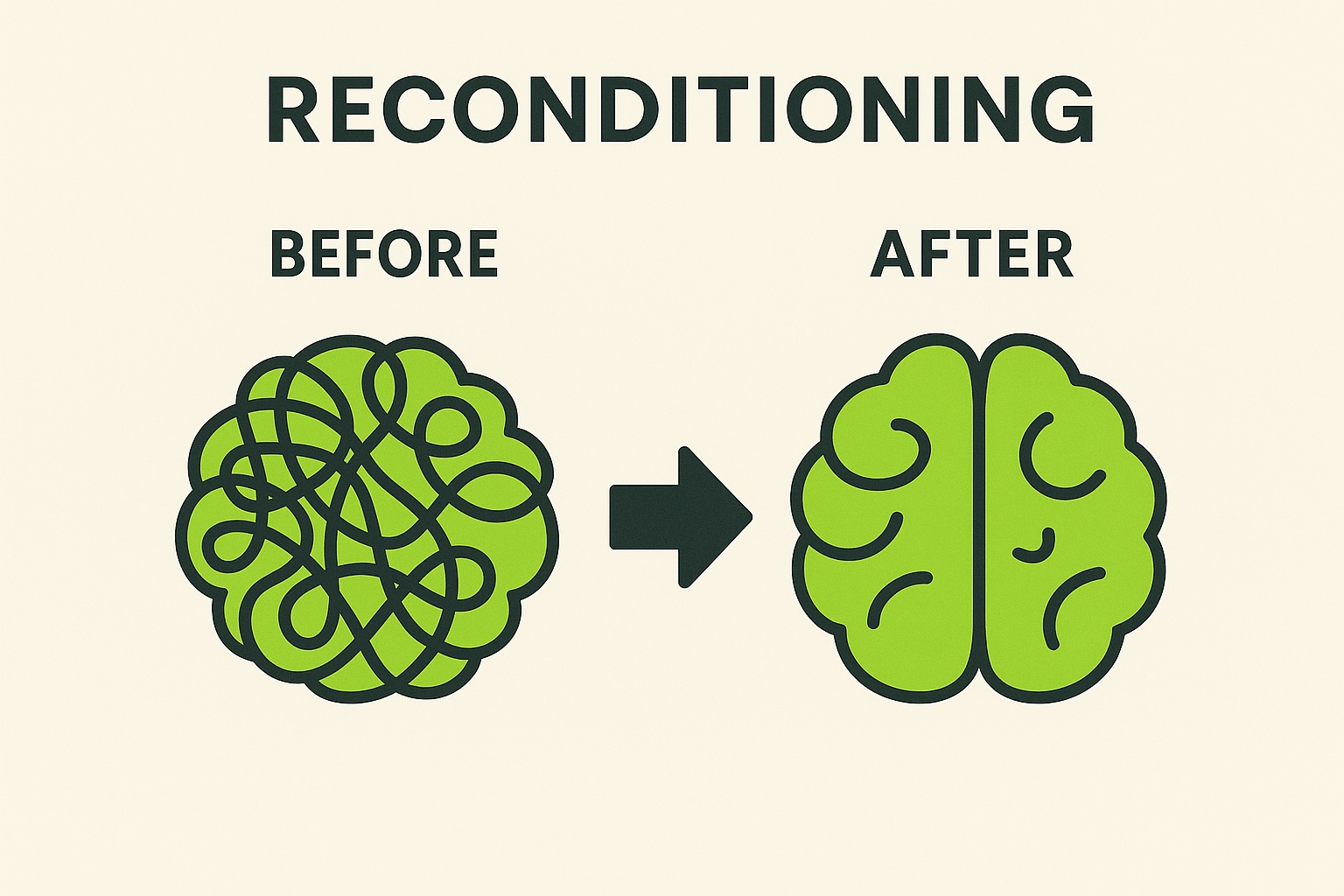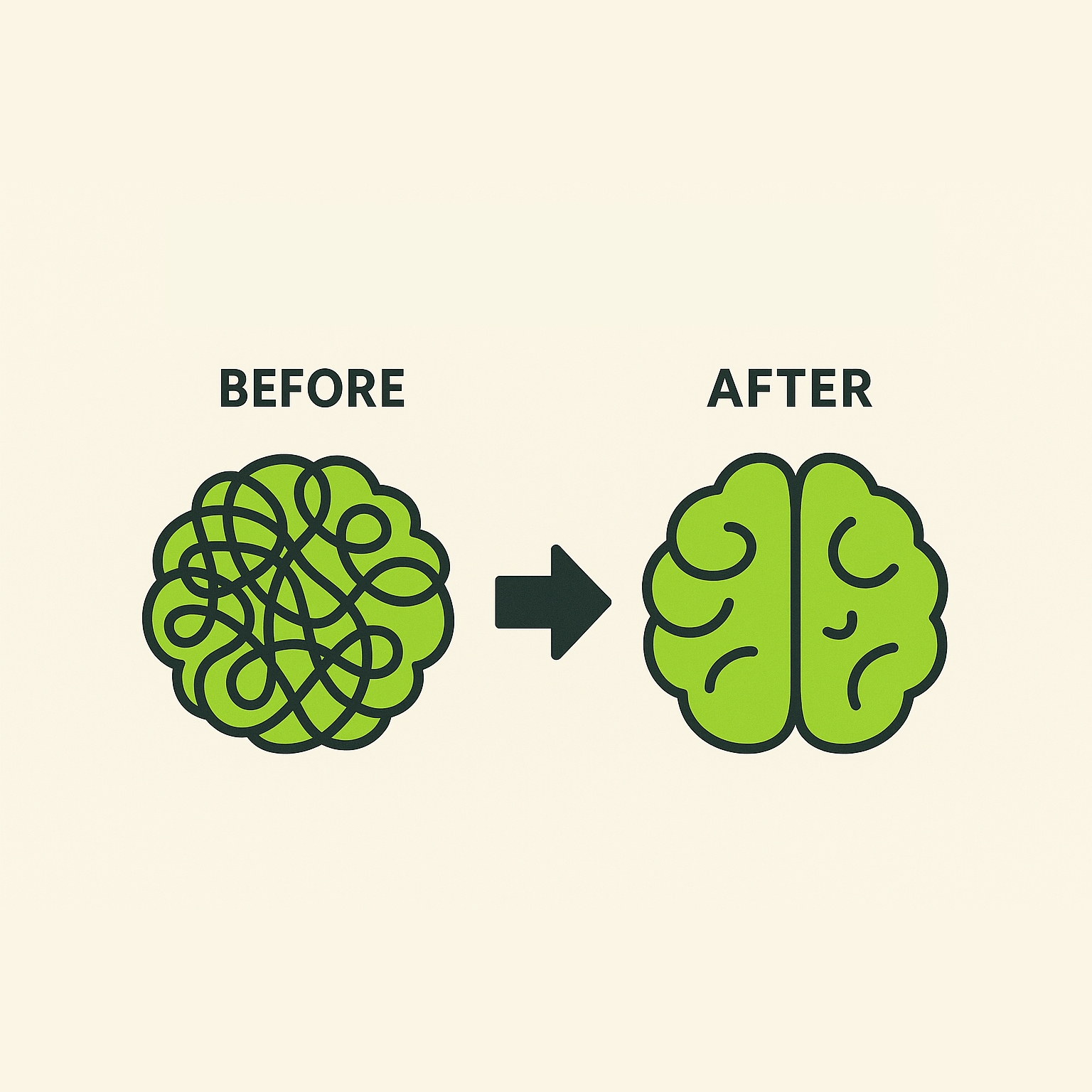Understanding a pattern is powerful. But it’s only the first step.
At ShiftGrit, Reconditioning is the mechanism of change within the Core Method. It is a structured, five-step process designed to reach beyond the cognitive mind and rewire the emotional layer where outdated threat responses live.
What Is Reconditioning?
Reconditioning systematically dissolves limiting beliefs at the subconscious level through carefully guided counter-conditioning activities.
It is designed to:
- Activate emotional memory networks through imaginal exposure
- Remove the limiting belief that misclassifies safe stimuli as threats
- Regulate the Walnut Brain (threat mind) to create authentic, automatic change
While the cognitive mind can recognize when patterns are irrational, real change only happens when the Walnut Brain no longer perceives non-threats as dangers. Reconditioning allows clients to stay anchored in the Cognitive Brain — the part responsible for goal setting, planning, emotional regulation, and strategic thinking.
Why Reconditioning Is Essential
Clients often enter therapy with insight into their patterns. They’ve read the books, journaled, analyzed themselves intellectually — and yet still feel hijacked by emotional reactions they can’t control.
This happens because:
- Limiting beliefs live in the emotional mind, outside of rational control
- Coping strategies manage symptoms but don’t remove the cause
- The Walnut Brain overpowers the Cognitive Brain when limiting beliefs are triggered
Reconditioning doesn’t manage. It dissolves.
By targeting and eliminating the outdated scripts written into the emotional mind, Reconditioning installs a new default: emotional neutrality unless a true threat presents.


Where Reconditioning Fits in the ShiftGrit Core Method™
Reconditioning comes after careful pattern identification. The therapy journey follows this progression:
- Enriched Intake
- Pattern Identification
- Reconditioning
- Repeat for each impactful pattern
Through this structured loop, we progressively dissolve the limiting beliefs that drive emotional reactivity, self-sabotage, and internal conflict.
Clinical Foundations of Reconditioning
Reconditioning draws on principles from:
- Classical and Operant Conditioning
- Exposure Therapy
- Systematic Desensitization
- Counter-Conditioning
- Neuropsychology
It is engineered specifically to reach the emotional brain, where traditional talk therapy and coping-based strategies often fall short.
The Outcome
After Reconditioning:
- Emotional triggers lose their intensity and power.
- Old reactions — like shutting down, overreacting, or self-sabotaging — simply don’t occur.
- New, healthy responses emerge naturally, without techniques or mental effort.
Clients often describe the experience as:
“I just don’t react that way anymore. It’s not even a struggle.”
Whether it’s staying calm when a text isn’t returned, asserting a need without fear, or connecting with a partner instead of withdrawing, the absence of maladaptive reactions opens space for intentional, values-driven living.
FAQ
Curious about how Identity Reconditioning works and whether it’s the right fit for you? Here are answers to some of the most common questions we hear from new clients.
What is Reconditioning at ShiftGrit?
How is Reconditioning different from traditional therapy techniques?
What happens during a Reconditioning session?
How long does it take to see results with Reconditioning?
Is Reconditioning based on established psychological principles?
Reconditioning is how understanding becomes freedom.
Learn more about our approach at BreakThePattern.ca.

